| |
|
|
|
|
|
|
|
|
|
|
| |
| |
 |
|
| |
田润德
编译文/图 2020-06-18
20:36 |
|
| |
|
|
|
|
| |
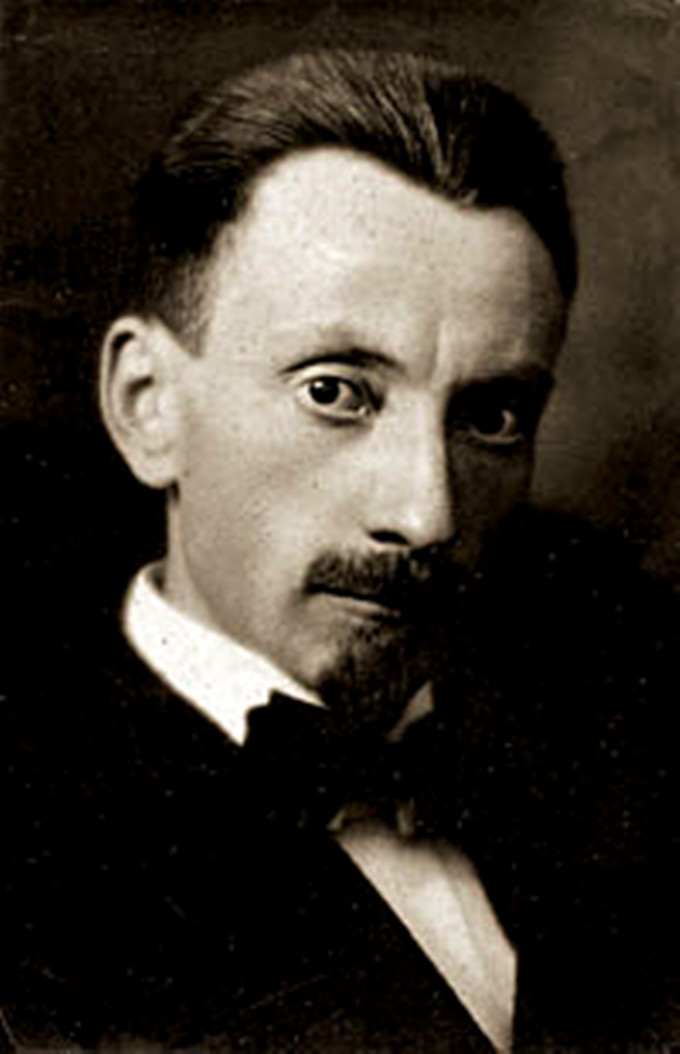 |
|
|
|
| |
路易吉·鲁索洛(Luigi Russolo,1883-1947) |
|
|
|
| |
|
|
|
|
| |
未来派作曲家路易吉·鲁索洛《苏醒之城》
|
|
|
|
| |
Luigi Russolo
Risveglio di una Città
|
|
|
|
| |
|
|
|
|
| |
音乐历史上的今天
1921年6月18日,意大利未来派作曲家路易吉·鲁索洛(Luigi Russolo)在法国巴黎香榭里榭剧院亲自指挥演出了他的交响作品音乐会。
当一个新的音乐创作流派——“未来派”在欧洲崛起之时,曾使欧洲乐坛为之侧目而视。1909年,一批未来派音乐家在巴黎.《费加罗报》上发表“未来主义宣言”。他们宣告“要全面废弃迄今为止的一切音乐形式”,要“以机械式的理想性法则创造未来音乐”。
不久以后,“未来派”的音乐作品就开始问世了。1921年6月18日意大利未来派作曲家路易吉·鲁索洛在法国巴黎香榭里榭剧院亲自指挥演出了他的交响作品音乐会,这是一次完全由能够奏出雷击声、警笛声、口哨声、爆炸声、轰鸣声、呼啸声、尖叫声、呐喊声、呻吟声、呜咽声、流水声、树叶沙沙声等二十五种噪音乐器演奏的交响音乐会,从而在音乐作品中运用噪音上创造了世界纪录。未来派作曲家尤其喜欢在音乐作品中加入机器声和马达声,因为他们认为未来的时代将是“机器统治世界”的时代。
今日视频:1、路易吉·鲁索洛《苏醒之城》;2、利盖蒂木管五重奏《六首小品》。 |
|
|
|
| |
 |
|
| |
路易吉·鲁索洛(Luigi Russolo) |
|
|
|
| |
 |
|
| |
路易吉·鲁索洛(Luigi Russolo)的绘画作品《反抗》
日期:1911年
风格:未来主义
类型:比喻 |
|
|
|
| |
The Revolt
Luigi Russolo
Date: 1911
Style: Futurism
Genre: figurative |
|
|
|
| |
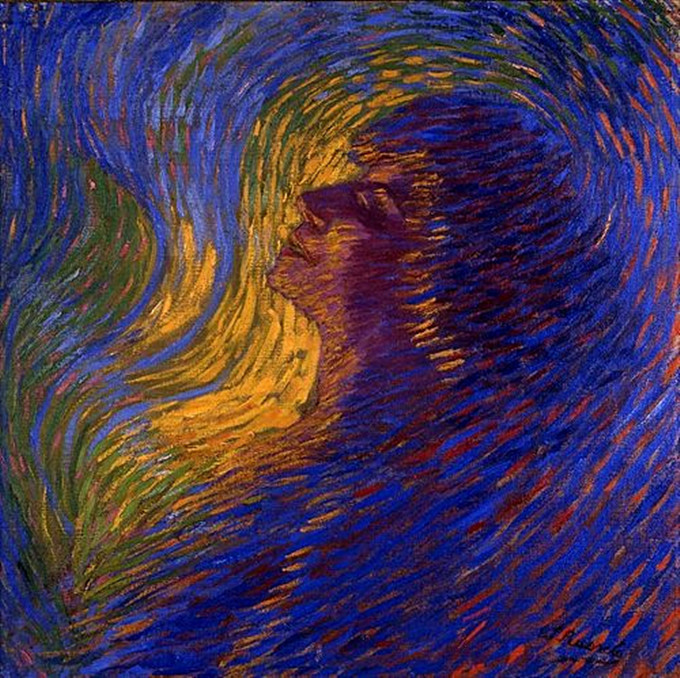 |
|
|
|
| |
路易吉·鲁索洛(Luigi Russolo)的绘画作品《香水》
日期:1910年
风格:新印象派,未来主义
类型:象征性绘画 |
|
|
|
| |
Perfume
Luigi Russolo
Date: 1910
Style: Divisionism, Futurism
Genre: symbolic painting |
|
|
|
| |
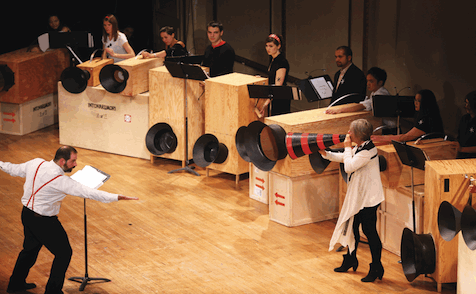 |
|
|
|
| |
路易吉·鲁索洛(Luigi Russolo)的音乐作品在演奏中 |
|
|
|
| |
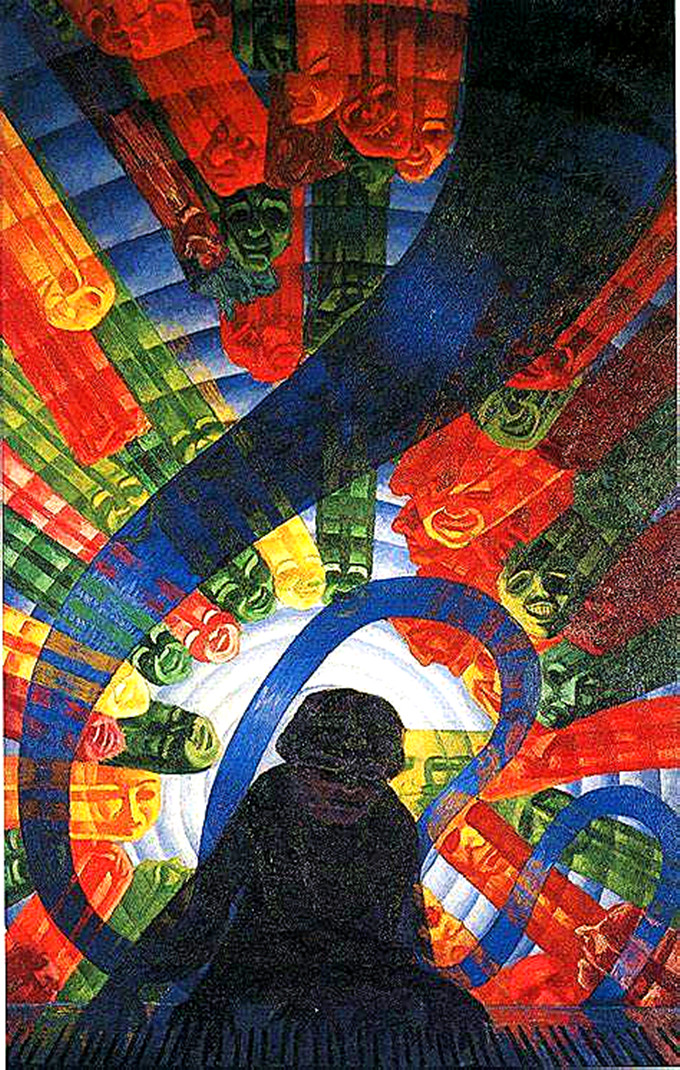 |
|
|
|
| |
路易吉·鲁索洛(Luigi Russolo)的绘画作品《音乐》(Music),1912
类型:象征性绘画 |
|
|
|
| |
The
Music
Luigi Russolo
Date: 1912
Style: Futurism
Genre: symbolic painting |
|
|
|
| |
 |
|
|
|
| |
巴利拉·普拉特拉(Balilla Pratella) |
|
|
|
| |
弗朗西斯科·巴利拉·普拉特拉
作曲家
Francesco Balilla
Pratella是意大利作曲家、音乐学家和散文家。普拉泰拉是意大利音乐未来主义的主要倡导者之一,他自己的音乐中有很多与他所写的宣言中所拥护的观点没有明显的联系。
|
|
|
|
| |
Francesco Balilla
Pratella
Composer
Francesco Balilla Pratella was an Italian composer, musicologist and
essayist. One of the leading advocates of futurism in Italian music,
much of Pratella's own music betrays little obvious connection to the
views espoused in the manifestos he authored. |
|
|
|
| |
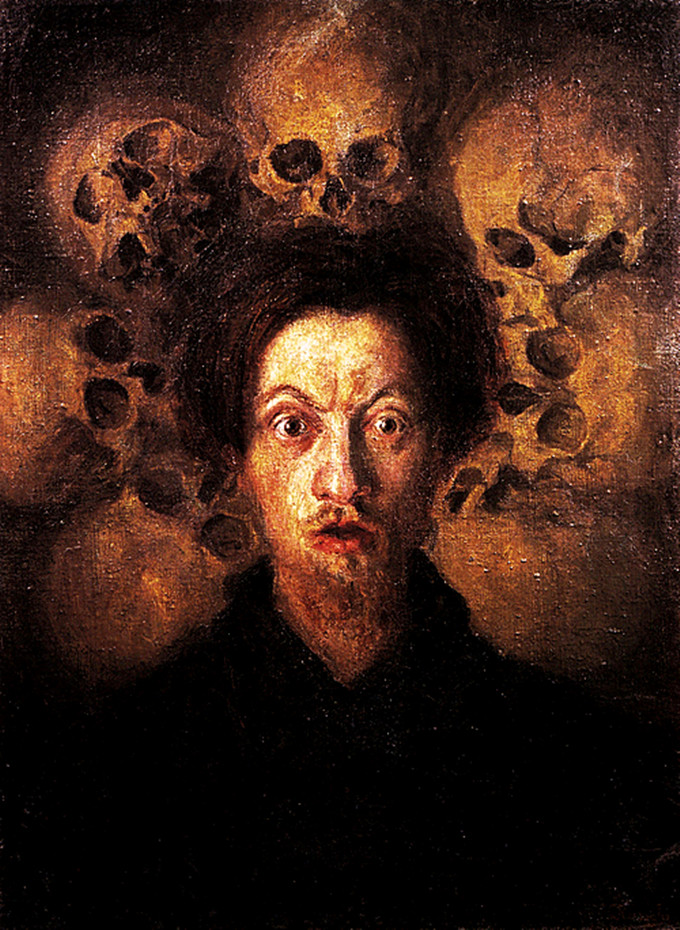 |
|
|
|
| |
鲁索洛自画像,1909 |
|
|
|
| |
鲁索洛出生于意大利波尔托格鲁阿罗(Portogruaro),年少时便到米兰生活,并开始了绘画活动。后来他认识了画家翁贝托·博乔尼(Umberto
Boccioni)、卡洛·卡拉(Carlo Carrà)和诗人菲利普·托马索·马里内蒂(Filippo Tommaso
Marinetti),这几个人趣味相投。1909年马里内蒂发表了《未来主义宣言》,鲁索洛也签了名。
受普拉特拉启发,1913年3月11日,鲁索洛在米兰发表了划时代的音乐宣言《噪音艺术》(L'arte dei
Rumori),其形式便是写给普列特拉的一封信。1916年它扩充成一本书发行。
鲁索洛认为,工业革命不仅仅是物质技术的大飞跃,它同时也改变了我们的声音环境以及倾听世界的方式。他认为蒸汽机是一个决定性因素,它改变了音乐的定义,因为在它出现之前,所有噪音几乎都是自然界的产物,比如雷鸣海啸等等,而且具有偶发性特征。蒸汽机之后的噪音,有很多都是人类主动制造的,就像当初创造了音乐一样。
从艺术角度审视噪音,会发现它比传统音乐具有更高的复杂程度。噪音在物理层面上体现为无准确的频率周期,在感知层面上无法辨别其确定性的音高,它处于一个模糊系统中。鲁索洛据此提出了一个微分音系统(Enharmonic),以包容客观存在于大自然和生活中的所有声音。 |
|
|
|
| |
Luigi Russolo Born
in Portogruaro, Italy, He moved to Milan as a young boy and began
painting.Later he met the painters Umberto Boccioni and Carlo Carra and
the poet Filippo Tommaso Marinetti, who were kindred spirits.In 1909
Marinetti issued the Futurist Manifesto, which Russollo signed.
Inspired by Pratla, On March 11, 1913, In Milan, Rusolo published his
landmark musical manifesto L 'Arte Dei Rumori, in the form of a letter
to Pretella.It was expanded into a book and published in 1916.
According to Russolo, the Industrial Revolution was not just a great
leap forward in material technology. It also changed our sound
environment and the way we listen to the world.He believed that the
steam engine was a decisive factor, which changed the definition of
music, because before it, almost all noise was a product of nature, such
as thunderstorms and tsunamis, and had sporadic characteristics.Much of
the noise that followed the steam engine was made by human initiative,
just as music was made in the first place.
When we look at noise from an artistic point of view, we find that it is
more complex than traditional music.On the physical plane, noise is
manifested as an inaccurate frequency period, and its deterministic
pitch cannot be distinguished on the perceptual level. It is in a fuzzy
system.According to it, He proposed an Enharmonic system that
incorporates all sounds that are present in nature and life. |
|
|
|
| |
|
|
|
|
| |
Today in the
history of music
On June 18, 1921, Italian futurist Luigi Russolo conducted a concert of
his symphonic works at the Champs Elysees Theater in Paris.
When a new musical genre, the futurist, emerged in Europe, it raised
eyebrows in Europe.1909 a group of futurist musicians published the
"Futurist Manifesto" in Le Figaro in Paris.They declared "the complete
abolition of all forms of music hitherto" and "the creation of the music
of the future by mechanical laws of ideality".
It was not long before the music of the Futurists began to appear.On
June 18, 1921 Italian futurism composer luigi russo los in Paris, France
in the wonderful wonderful theatre oversaw his symphony concert
performance, this is a completely by sound can be played by lightning,
sirens and whistles, explosions, roar, roar, the screams and cries and
moans, whimper, the sound of water, the leaves rustle of 25 kinds of
noise instruments symphony concert, so in music works on the use of
noise created the world record.Futurist composers in particular like to
add machine and motor sounds to their music, because they believe that
the future era will be an era when "machines rule the world."
Today's videos: 1. The City of The Waking by Luigi Russoro;2. "Six
Sketches" by Ligety woodwind Quintet.
|
|
|
|
| |
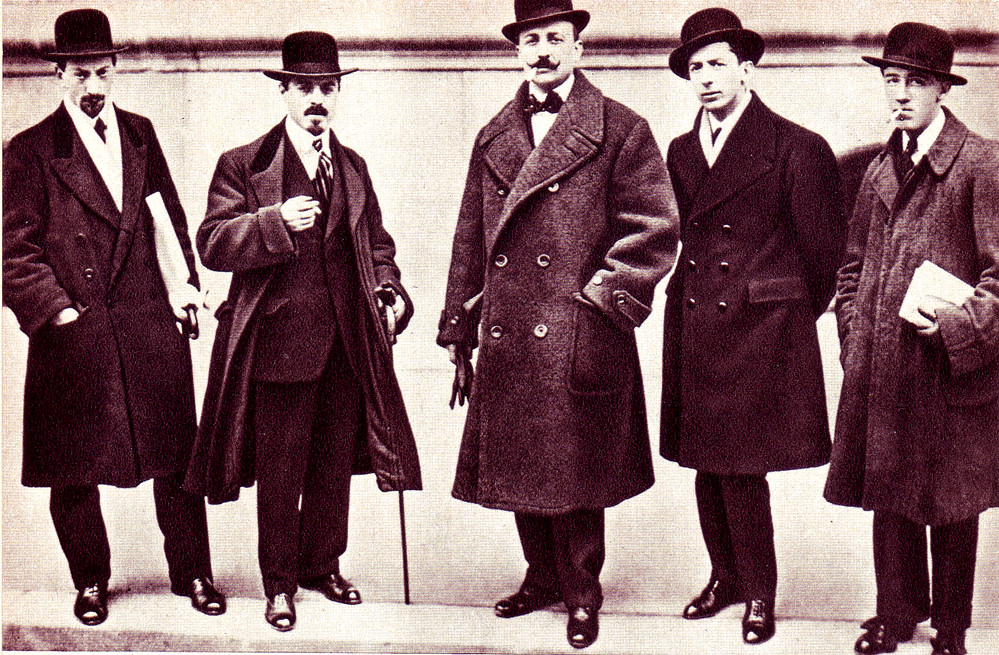 |
|
| |
|
1912年2月,路易吉·鲁斯索罗、卡洛·卡拉、马里内蒂、波契奥尼和塞维里尼在巴黎伯恩海姆画廊举办的第一次未来主义绘画展览上,照片取自1950年9月17日意大利杂志第20页,拍摄于1912年2月 |
|
|
|
|
| |
Luigi Russolo, Carlo Carra, Marinetti, Boccioni and
Severini in Paris during the first exhibition of
Futurist Painting in the Bernheim Gallery in
February 1912, photography taken from the magazine
L'Illustrazione Italianaof 17 september 1950, page
20, shot 02/1912 |
|
|
|
| |
尖叫的机器:发明未来主义音乐
音乐是路易吉·鲁索罗与生俱来的权利。他的父亲是一名大教堂管风琴手,他的兄弟们毕业于米兰音乐学院。在学校里,鲁索罗追求绘画,但后来他又回到了音乐,把音乐变成了不和谐的野兽,煽动群众暴动,发明新乐器,成为噪音音乐之父。
在米兰艺术学校(Accademia di
Brera)学习期间,鲁索罗以一种寒冷的象征主义风格工作。他早期的作品表现出对细节的敏锐关注和对沐浴在戏剧性灯光下的风景的专注。在学院学习期间,鲁洛洛加入了米兰艺术家庭,这是一群正在发展一种新的艺术创作方式的年轻画家。这个小组包括卡洛·卡拉和翁贝托·波西奥尼,他们和鲁索罗将继续起草一个新的运动的基础,致力于速度,暴力和美丽的野蛮的机器-未来主义。
和无政府主义者交朋友
到1910年,意大利沸腾了。菲利浦·马里内蒂的《未来主义宣言》于一年前出版,以爱国破坏和暴力[3]的使命激进了意大利先锋派,而鲁索罗则是未来主义的中心。他与卡拉和波契奥尼的友谊使他进入了新运动的核心圈子——他参加了以愤怒的诗歌和焚烧旗帜为特色的戏剧未来主义晚宴,并在马里内蒂的宣言和波契奥尼的未来主义绘画宣言上签名。
发明新音乐
几年后,鲁索罗在罗马科斯坦齐剧院听朋友巴里拉·普拉泰拉的未来主义乐团演出时,有了一个新的感悟。在他的脑海里,声音的历史是一种演变,最终以机械噪音的胜利统治而告终。在给普拉泰拉的一封信中,他起草了后来成为他的开创性作品《噪音的艺术》——一个关于声音的未来主义宣言。
古代生活一片寂静。19世纪,随着机器的发明,噪音诞生了。今天,噪音战胜了男人的感情。”
路易吉·鲁索罗的新音乐需要新的乐器,在接下来的十年里,鲁索罗发明了一个动物园的自制乐器,他称之为Intonarumori。一群步履蹒跚的神秘盒子和装有手摇曲柄和机械装置的圆锥形喇叭,创造出他的新词汇的声音:
咆哮声,雷鸣声,爆炸声,嘶嘶的咆哮声,砰砰声,轰隆声
吹口哨,嘶嘶作响,吹起
窃窃私语,窃窃私语,窃窃私语,窃窃私语
敲打金属、木材、毛皮、石头、陶器等所获得的噪音
动物和人的声音,呼喊,尖叫,尖叫,哀号,呜咽,死亡的响动,呜咽
吱吱嘎嘎,沙沙作响,嗡嗡声,噼啪声,刮擦声
在1913年和1914年的未来主义音乐会中演奏了《咏春颂》,赢得了赞誉和强烈的敌意。在接下来的十年里,尽管在第一次世界大战中受了伤,Russolo还是继续他的表演并发展了新的音乐符号。到1921年,他的音乐得到了伟大的俄罗斯作曲家Igor
Stravinsky和著名的巴黎俄罗斯芭蕾舞团的创始人Sergei Diaghilev的认可和尊重。
鲁索罗的机器在第二次世界大战的巴黎轰炸中被烧毁,他的机器唯一的录音是1921年他的兄弟安东尼奥录制的,将刺耳的噪音与传统的管弦乐配乐结合在一起。虽然他的作品已经消失了,但Russolo在音乐词汇上的戏剧性扩展一直陪伴着我们。从实验噪音音乐到标志性的《盗梦空间》配乐,我们都应该向路易吉·罗斯索罗致敬。
|
|
|
|
| |
German
The Screaming Machine: Inventing futuristic music
Music is Luigi Russoro's birthright.His father was a
cathedral organist, and his brothers graduated from
the Milan Conservatory.At school, Russoro pursued
painting, but later returned to music, turning it
into discordant beasts, inciting mass riots,
inventing new instruments, and becoming the father
of noise-music.
While studying at the Accademia di Brera, He worked
in a frigid, symbolic style.His early works show a
keen attention to detail and a focus on landscapes
bathed in dramatic light.While at the Academy, He
joined the Milan Art Family, a group of young
painters who were developing a new way of making
art.The group includes Carlo Cara and Umberto
Porcione, who, along with Russoro, will continue to
draft the basis for a new movement dedicated to
speed, violence and the beauty of the savage machine
- futurism.
Make friends with anarchists
By 1910, Italy was boiling.Philip Marinetti's
Futurist Manifesto, published a year ago,
radicalised the Italian avant-garde with its mission
of patriotic destruction and violence, and Russoro
was at the centre of futurism.His friendships with
Kara and Bocioni brought him into the inner circle
of the new movement -- he attended theatrical
futurist dinners featuring angry poems and
flag-burning, and signed Marinetti's manifesto and
Bocioni's Futurist painting Manifesto.
Invent new music
A few years later, Russoro had a new Epiphany while
listening to his friend Barilla Platella's futurist
band at the Romako Stanzi Theater.In his mind's eye,
the history of sound is an evolution that culminates
in a triumphant reign of mechanical noise.In a
letter to Platella, he drafted what would become his
seminal work, The Art of Noise, a futuristic
manifesto on sound.
Ancient life was silent.Noise was born in the 19th
century with the invention of machines.The noise got
the better of a man's feelings today."
Luigi Russoro's new music required new instruments,
and over the next decade, Russoro invented a zoo
instrument he called the Intonarumori.A collection
of hobbling mysterious boxes and conical horns
fitted with hand-cranked and mechanical devices,
creating the sound of his new words:
Roar, thunder, explosion, hissing roar, boom, boom
Whistling, hissing, blowing
Whisper, whisper, whisper, whisper
Noise made by beating on metal, wood, fur, stone,
pottery, etc
Animal and human voices, Shouting, screaming,
screaming, wailing, whimpering, death rattle,
whimpering
A creak, a rustle, a buzz, a crack, a scratch
"Ode to Wing Chun" was performed at futurist
concerts in 1913 and 1914, winning praise and strong
hostility.Over the next decade, despite being
wounded in World War I, Russolo continued to perform
and develop new musical symbols.By 1921, his music
was recognized and respected by the great Russian
composer Igor Stravinsky and Sergei Diaghilev,
founder of the famous Paris Russian Ballet.
Russoro's machine was burned during the bombing of
Paris during World War II. The only recording of his
machine was made in 1921 by his brother Antonio,
combining harsh noises with a traditional orchestral
score.Although his work has disappeared, Russolo's
dramatic expansion into the musical vocabulary has
stayed with us.From experimental noise music to the
iconic Inception soundtrack, we all owe tribute to
Luigi Rossoro. |
|
|
|
| |
|
|
|
|
| |
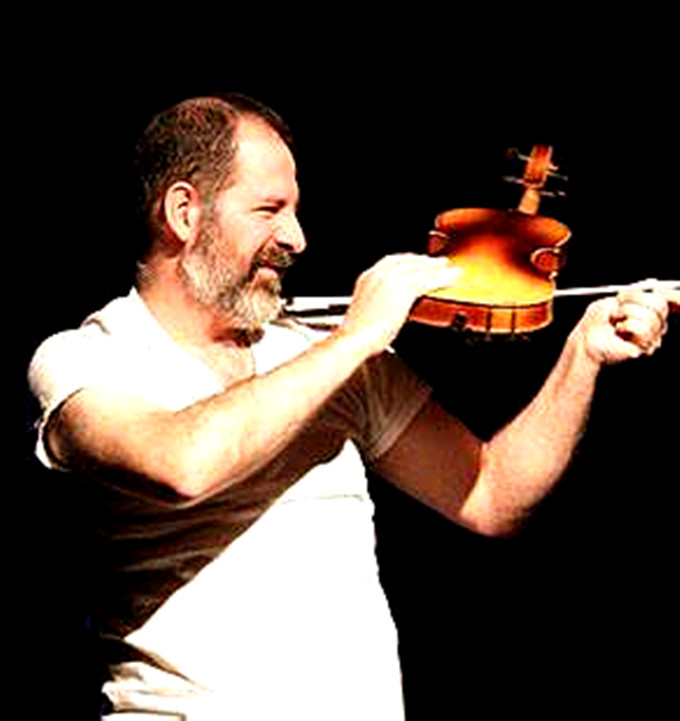 |
|
|
|
| |
卢西亚诺·切萨教授(Professor Luciano Chessa) |
|
|
|
| |
死者能听到的音乐:路易吉·鲁索罗《噪音的艺术》中的声音、符号和神秘
卢西亚诺·切萨教授的报告
周五,11月8日
8点
天文台,纽约布鲁克林联合街543号
门票:10美元
由Phantasmaphile和ItalianFuturism.org提供
作者的第一个系统的美学噪音和所谓的创造者第一机械声音合成器,路易吉Russolo(1885 -
1947),意大利未来主义画家,作曲家,建设者的乐器是一个重要的人物在20世纪音乐的演变和影响了艺术家约翰·凯奇和大卫·伯恩等。在今晚的演讲中,卢西亚诺·切萨将揭开路易吉·鲁索罗的《噪音艺术》(1913年)的神秘计划,这是20世纪音乐美学中最重要和最有影响力的文本之一。Russolo的想法和他们的实际表现——intonarumori——对他和他的伙伴们来说是一个多级实验的元素,以达到更高的精神意识状态。鲁索罗的理论反映了他对联觉、形而上学和炼金术的兴趣,他很容易将安妮·贝赞特(Annie
Besant)和C.W.里德比特(C.W. Leadbeater)所著的《思想形态》(mind forms,
1901)作为他创新的指导来源。我们将探索Russolo的信念,一个艺术家的提升者可以调用在星界波动的灵魂,与死者沟通,并驾驭他们的能量来进行灵性化过程。
Luciano
Chessa是一位作曲家,指挥家,钢琴家,音乐锯/越南丹包独奏家,活跃在欧洲,美国美国、澳大利亚和南美。切萨是《未来主义者鲁索罗:噪音、视觉艺术和神秘学》的作者,这是有史以来第一部献给未来主义者鲁索罗和他的噪音艺术的专著(加州大学出版社)。2014年,切萨将参加古根海姆博物馆的意大利未来主义回顾展。Chessa持有钢琴表演和硕士D.M.A.成分从博洛尼亚G.B.马提尼音乐学院,意大利中世纪音乐的历史上硕士以优等成绩毕业从博洛尼亚大学和音乐学和音乐博士学位来自加州大学戴维斯分校的批评。他曾在英国牛津大学圣约翰学院、哥伦比亚大学、哈佛大学、悉尼和墨尔本的音乐学院和大学、博洛尼亚音乐学院、加州大学戴维斯分校、加州大学伯克利分校、斯坦福大学和伦斯勒理工学院的EMPAC大学任教、演讲和演讲。卢西亚诺Chessa在旧金山音乐学院任教,静默的顾问委员会,国际研究刊物,致力于实验巴黎1
-行政法的音乐,属于科幻的指导委员会电子音乐节,并与科幻的意大利文化研究所合作。他的音乐由Edizioni
Carrara和意大利国家广播频道的音乐出版公司RAI TRADE出版。 |
|
|
|
| |
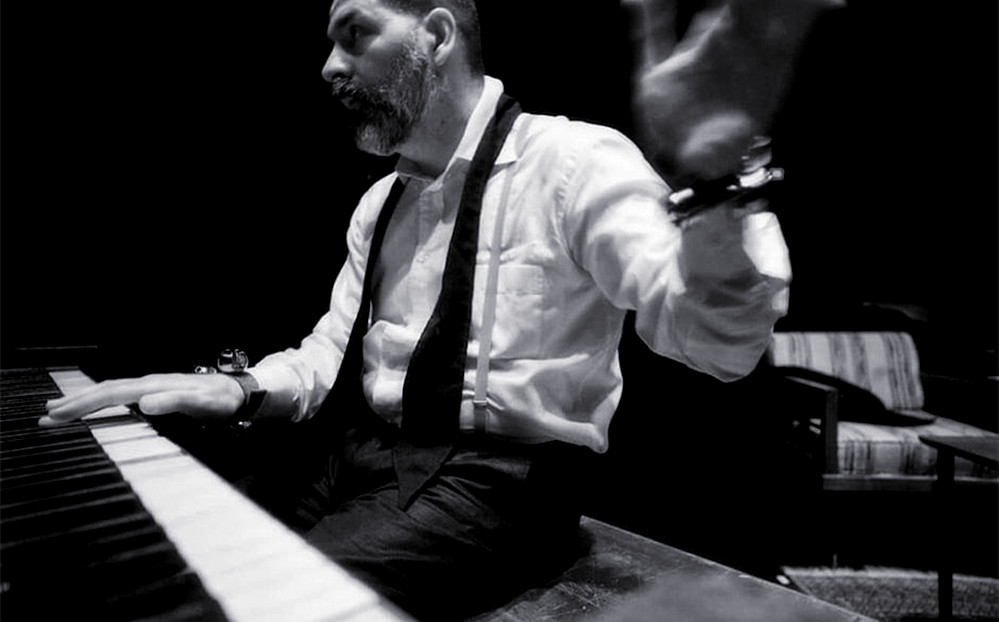 |
|
| |
卢西亚诺·切萨教授(Professor Luciano Chessa) |
|
|
|
| |
Music
the Dead Can Hear: Sound, Symbol, and the Occult in Luigi
Russolo’s Art of Noises
A presentation by Professor Luciano Chessa
Friday, November 8th
8pm
Observatory, 543 Union Street, Brooklyn, NY
Admission: $10
Presented by Phantasmaphile and ItalianFuturism.org
As the author of the first systematic aesthetics of Noise and
the alleged creator of the first mechanical sound synthesizer,
Luigi Russolo (1885-1947), Italian Futurist painter, composer,
and builder of musical instruments is a crucial figure in the
evolution of 20th century music and has influenced artists such
as John Cage and David Byrne. In this evening’s lecture, Luciano
Chessa will unveil the occult plan of Luigi Russolo’s seminal
Art of Noises (L’arte dei Rumori, 1913) which became one of the
most important and influential texts in 20th century musical
aesthetics. Russolo’s ideas and their practical manifestation —
the intonarumori — were for him and his associates elements of a
multi-leveled experiment to reach higher states of spiritual
consciousness. Russolo’s theories reflected his interest in
synesthesia, metaphysics, and alchemy and he readily identified
Thought-Forms (1901), an influential Theosophical text by Annie
Besant and C.W. Leadbeater, as a guiding source for his
innovations. We will explore Russolo’s belief that an
artist-initiate can invoke spirits fluctuating in the astral
plane, communicate with the dead, and harness their energy for
the spiritualizing process.
Luciano Chessa is a composer, conductor, pianist, and musical
saw/Vietnamese dan bau soloist who has been active in Europe,
the U.S., Australia, and South America. Chessa is the author of
Luigi Russolo, Futurist: Noise, Visual Arts, and the Occult, the
first monograph ever to be dedicated to the Futurist Russolo and
his Art of Noise (University of California Press). In 2014,
Chessa will be participating in the Guggenheim’s retrospective
exhibit on Italian Futurism. Chessa holds a D.M.A. in Piano
performance and a M.A. in Composition from the G.B. Martini
Conservatory of Music in Bologna, Italy, a M.A. magna cum laude
in History of Medieval Music from the University of Bologna, and
a Ph.D. in Musicology and Music Criticism from the University of
California at Davis. Chessa taught, lectured, and talked at
various institutions including St. John’s College of Oxford, UK,
Columbia University, Harvard University, Sydney’s and
Melbourne’s Conservatories and Universities, the Conservatory of
Music in Bologna, UC Davis, UC Berkeley, Stanford University,
and EMPAC in the campus of Rensselaer Polytechnic Institute.
Luciano Chessa teaches at the San Francisco Conservatory of
Music, serves in the Advisory Board of TACET, the international
research publication dedicated to Experimental Music from the
Université Paris 1 – Panthéon-Sorbonne, is a member of the
Steering Committee of the SF Electronic Music Festival, and
collaborates with SF’s Italian Cultural Institute. His music is
published by Edizioni Carrara and by RAI TRADE, the Italian
National Broadcast Channels’ music publishing company. |
|
|
|
| |
|
|
|
|
| |
 |
|
|
|
| |
捷尔吉·利盖蒂(Gyorgy Ligeti 1923—2006) |
|
|
|
| |
捷尔吉·利盖蒂(Gyorgy Ligeti
1923—2006)原籍匈牙利,1956年离开匈牙利,先在科隆作电子音乐实验,1967年入奥地利籍。利盖蒂虽然受电子音乐的启发,但是它主要还是创作用传统乐器演奏的作品。
利盖蒂(Gyorgy Ligeti)是先锋音乐代表人物之一,著名的噪音作曲家(“Sound
Composers)。作为匈牙利犹太人的后裔,他在匈牙利接受音乐教育,该国音乐深深植根于他的血液之中,并对他以后的创作产生了深刻影响。 |
|
|
|
| |
Gyorgy Ligeti was originally from Hungary. She
left Hungary in 1956 and first experimented with electronic
music in Cologne. In 1967, she was born in Austria.Although
inspired by electronic music, Ligety mainly creates works
performed on traditional instruments.
The getty (Gyorgy Ligeti) is one of the pioneers of music
representative, the noise of the famous composer (" Sound
Composers).As a descendant of Hungarian Jews, he received
musical education in Hungary, where the music was deeply rooted
in his blood and had a profound influence on his later works. |
|
|
|
| |
|
|
|
|
| |
【利盖蒂】木管五重奏-六首小品Ligeti - Six Bagatelles |
|
|
|
| |
Mahler- Piano Quartet in A Minor |
|
|
|
| |
|
|
|
|
| |
未得原作者编者授权严禁转载www.mt77.com任何内容 |
|
|
|
|
|
|
|
|
|
|
|
|
|
|


